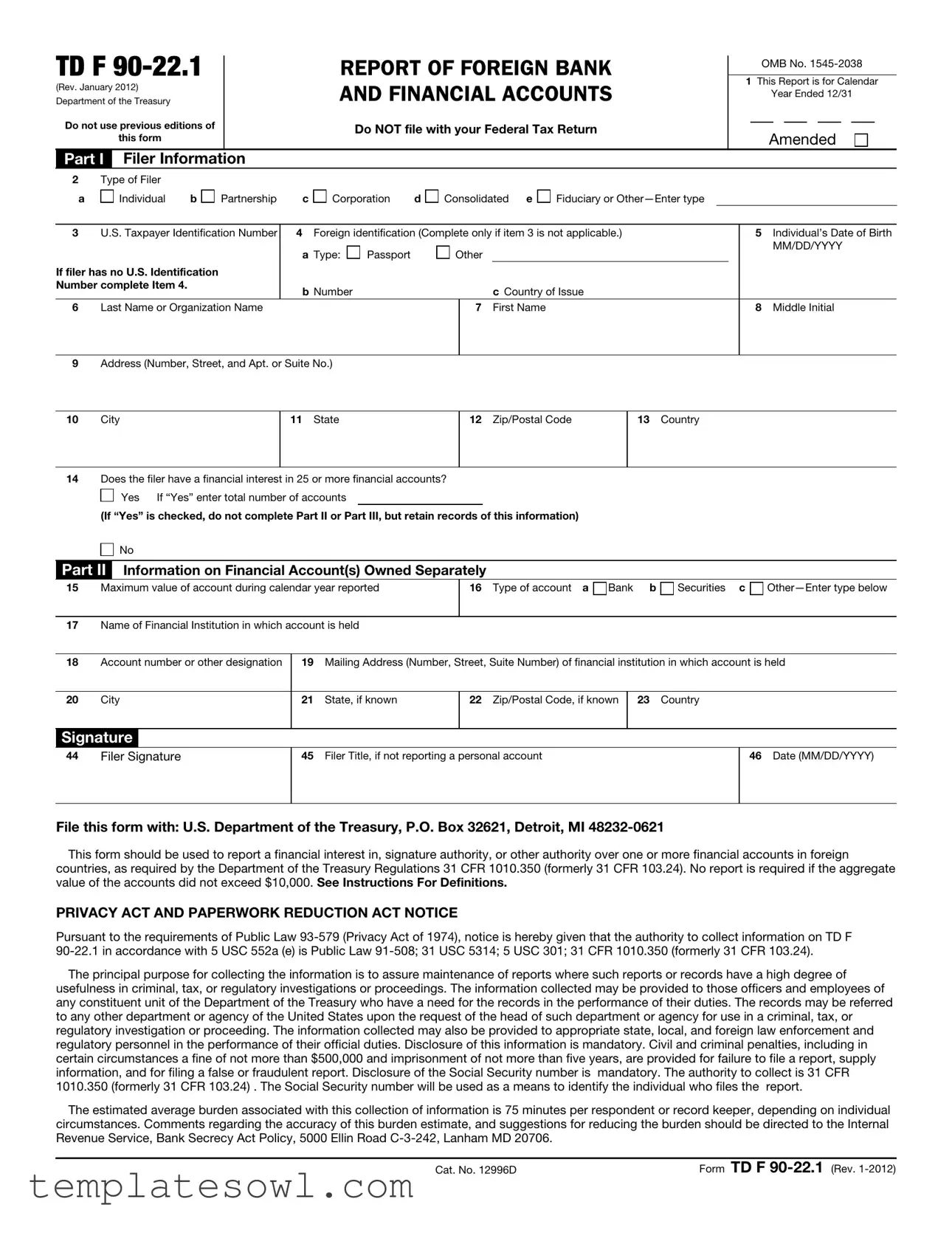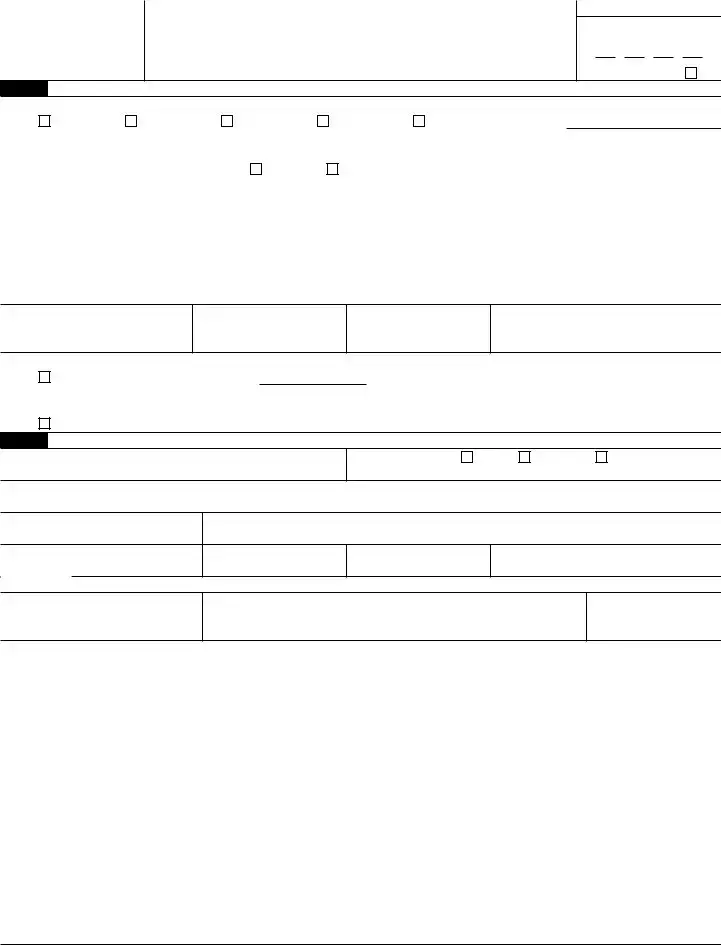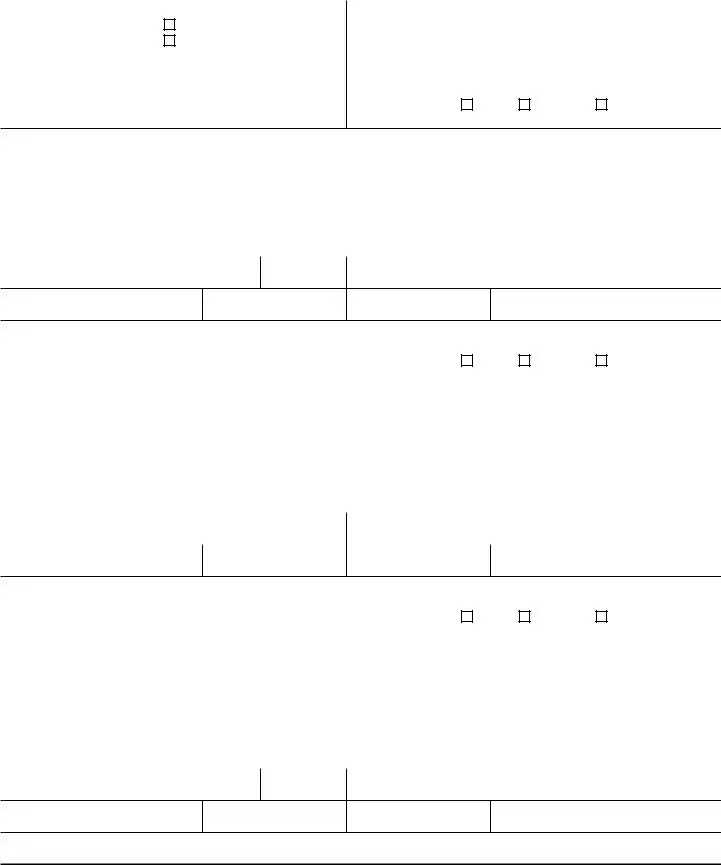(3)An officer or employee of an Authorized Service Provider is not required to report signature authority over a foreign financial account that is owned or maintained by an investment company that is registered with the Securities and Exchange Commission. Authorized Service Provider means an entity that is registered with and examined by the Securities and Exchange Commission and provides services to an investment company registered under the Investment Company Act of 1940.
(4)An officer or employee of an entity that has a class of equity securities listed (or American depository receipts listed) on any United States national securities exchange is not required to report signature authority over a foreign financial account of such entity.
(5)An officer or employee of a United States subsidiary is not required to report signature authority over a foreign financial account of the subsidiary if its United States parent has a class of equity securities listed on any United States national securities exchange and the subsidiary is included in a consolidated FBAR report of the United States parent.
(6)An officer or employee of an entity that has a class of equity securities registered (or American depository receipts in respect of equity securities registered) under section 12(g) of the Securities Exchange Act is not required to report signature authority over a foreign financial account of such entity.
Trust Beneficiaries. A trust beneficiary with a financial interest described in section (2)(e) of the financial interest definition is not required to report the trust's foreign financial accounts on an FBAR if the trust, trustee of the trust, or agent of the trust: (1) is a United States person and (2) files an FBAR disclosing the trust's foreign financial accounts.
United States Military Banking Facility. A financial account maintained with a financial institution located on a United States military installation is not required to be reported, even if that military installation is outside of the United States.
Filing Information
When and Where to File. The FBAR is an annual report and must be received by the Department of the Treasury on or before June 30th of the year following the calendar year being reported. Do Not file with
federal income tax return.
File by mailing to:
Department of the Treasury Post Office Box 32621 Detroit, MI 48232-0621
If an express delivery service is used, file by mailing to:
IRS Enterprise Computing Center
ATTN: CTR Operations Mailroom, 4th Floor 985 Michigan Avenue
Detroit, MI 48226
The FBAR may be hand delivered to any local office of the Internal Revenue Service for forwarding to the Department of the Treasury, Detroit, MI. The FBAR may also be delivered to the Internal Revenue Service's tax attaches located in United States embassies and consulates for forwarding to the Department of the Treasury, Detroit, MI. The FBAR is not considered filed until it is received by the Department of the Treasury in Detroit, MI.
No Extension of Time to File. There is no extension of time available for filing an FBAR. Extensions of time to file federal tax returns do NOT extend the time for filing an FBAR. If a delinquent FBAR is filed, attach a statement explaining the reason for the late filing.
Amending a Previously Filed FBAR. To amend a filed FBAR, check the "Amended" box in the upper right hand corner of the first page of the FBAR. Complete the form in its entirety and include the amended information. Do not attach a copy of the original FBAR. An amendment should not be made until at least 120 calendar days after the original FBAR is filed.
Record Keeping Requirements. Persons required to file an FBAR must retain records that contain the name in which each account is maintained, the number or other designation of the account, the name and address of the foreign financial institution that maintains the account, the type of account, and the maximum account value of each account during the reporting period. The records must be retained for a
period of 5 years from June 30th of the year following the calendar year reported and must be available for inspection as provided by law. Retaining a copy of the filed FBAR can help to satisfy the record keeping requirements.
An officer or employee who files an FBAR to report signature authority over an employer's foreign financial account is not required to personally retain records regarding these accounts.
Questions. FBAR help is available by telephone or e-mail. Call
866-270-0733 (toll-free within the U.S.) or 313-234-6146 (from outside the U.S., not toll-free) from 8 a.m.—4:30 p.m. Eastern time, or e-mail your inquiry to FBARquestions@irs.gov.
Explanations for Specific Items
Part I — Filer Information
Item 1. The FBAR is an annual report. Enter the calendar year being reported. If amending a previously filed FBAR, check the “Amended” box.
Item 2. Check the box that describes the filer. Check only one box. Individuals reporting only signature authority, check box “a”. If filing a consolidated FBAR, check box “d”. To determine if a consolidated FBAR can be filed, see Part V. If the type of filer is not listed in boxes “a” through “c”, check box “e”, and enter the type of filer. Persons that should check box “e” include, but are not limited to, trusts, estates, limited liability companies, and tax-exempt entities (even if the entity is organized as a corporation). A disregarded entity must check box “e”, and enter the type of entity followed by “(D.E.)”. For example, a limited liability company that is disregarded for United States federal tax purposes would enter “limited liability company (D.E.)”.
Item 3. Provide the filer's United States taxpayer identification number. Generally, this is the filer's United States social security number (SSN), United States individual taxpayer identification number (ITIN), or employer identification number (EIN). Throughout the FBAR, numbers should be entered with no spaces, dashes, or other punctuation. If the filer does NOT have a United States taxpayer identification number, complete Item 4.
Item 4. Complete Item 4 only if the filer does NOT have a United States taxpayer identification number. Item 4 requires the filer to provide information from an official foreign government document to verify the filer's nationality or residence. Enter the document number followed by the country of issuance, check the appropriate type of document, and if “other” is checked, provide the type of document.
Item 5. If the filer is an individual, enter the filer's date of birth, using the month, day, and year convention.
Items 9, 10, 11, 12, and 13. Enter the filer's address. An individual residing in the United States must enter the street address of the individual's United States residence, not a post office box. An individual residing outside the United States must enter the individual's United States mailing address. If the individual does not have a United States mailing address, the individual must enter a foreign residence address. An entity must enter its United States mailing address. If the entity does not have a United States mailing address, the entity must enter its foreign mailing address.
Item 14. If the filer has a financial interest in 25 or more foreign financial accounts, check “Yes” and enter the number of accounts. Do not complete Part II or Part III of the FBAR. If filing a consolidated FBAR, only complete Part V, Items 34-42, for each United States entity included in the consolidated FBAR.
Note. If the filer has signature authority over 25 or more foreign financial accounts, only complete Part IV, Items 34-43, for each person for which the filer has signature authority, and check “No” in Part I, Item 14.
Filers must comply with applicable recording keeping requirements. See Record Keeping Requirements.
Part II — Information on Financial Account(s) Owned Separately
Enter information in the applicable parts of the form only. Number the pages used, and mail only those pages. If there is not enough space to provide all account information, copy and complete additional pages of the required Part as necessary. Do not use any attachments unless otherwise specified in the instructions.





